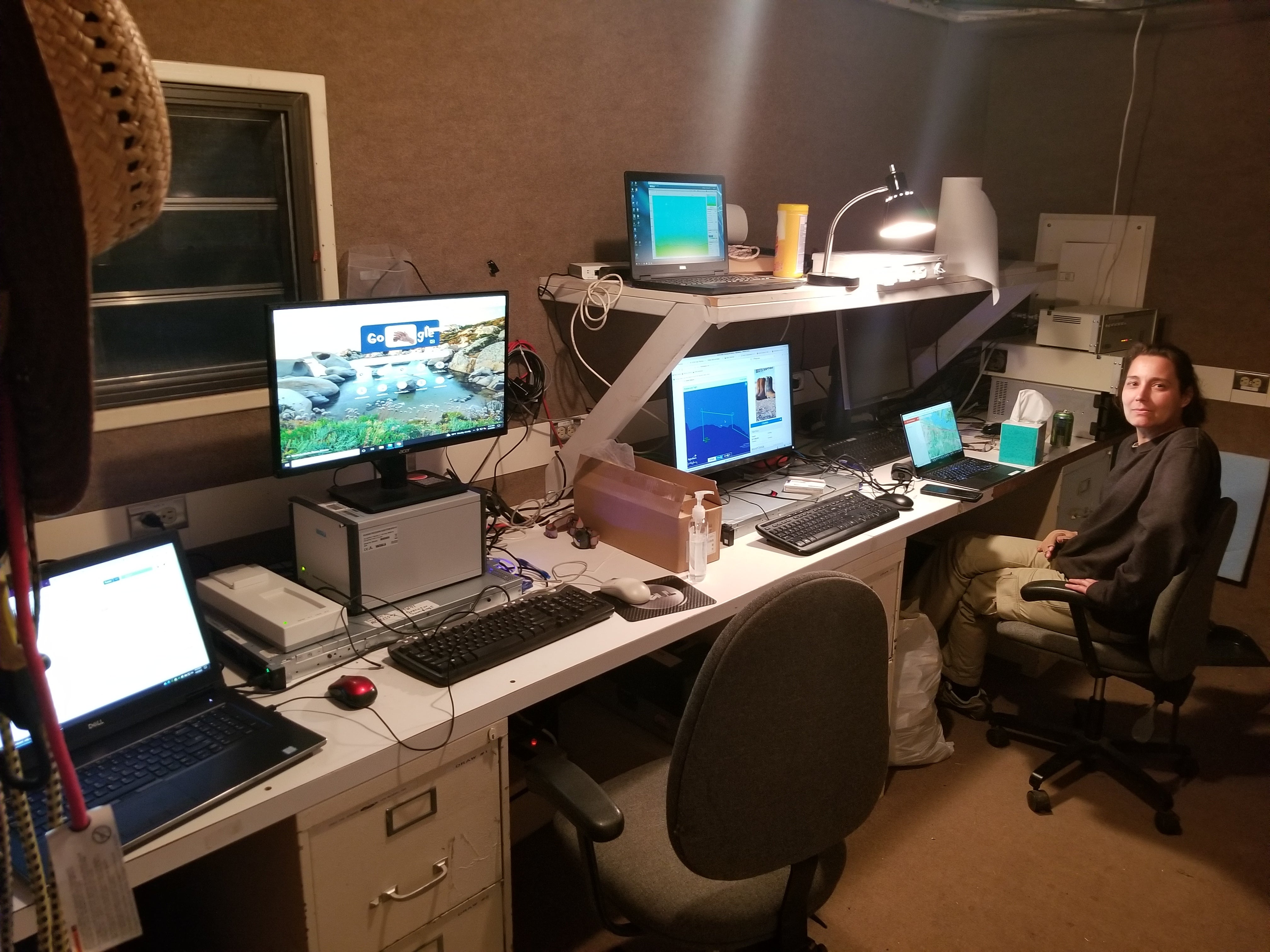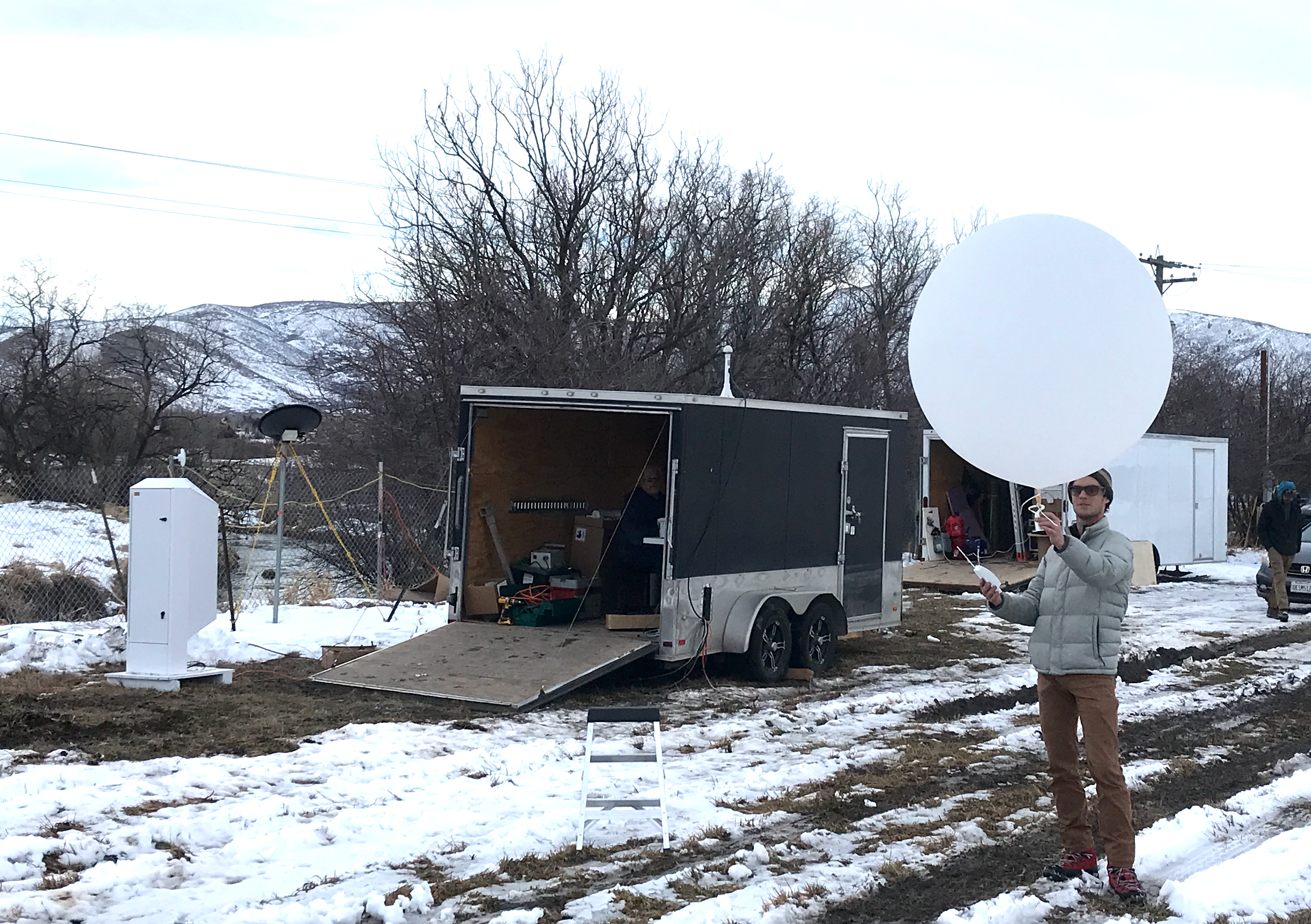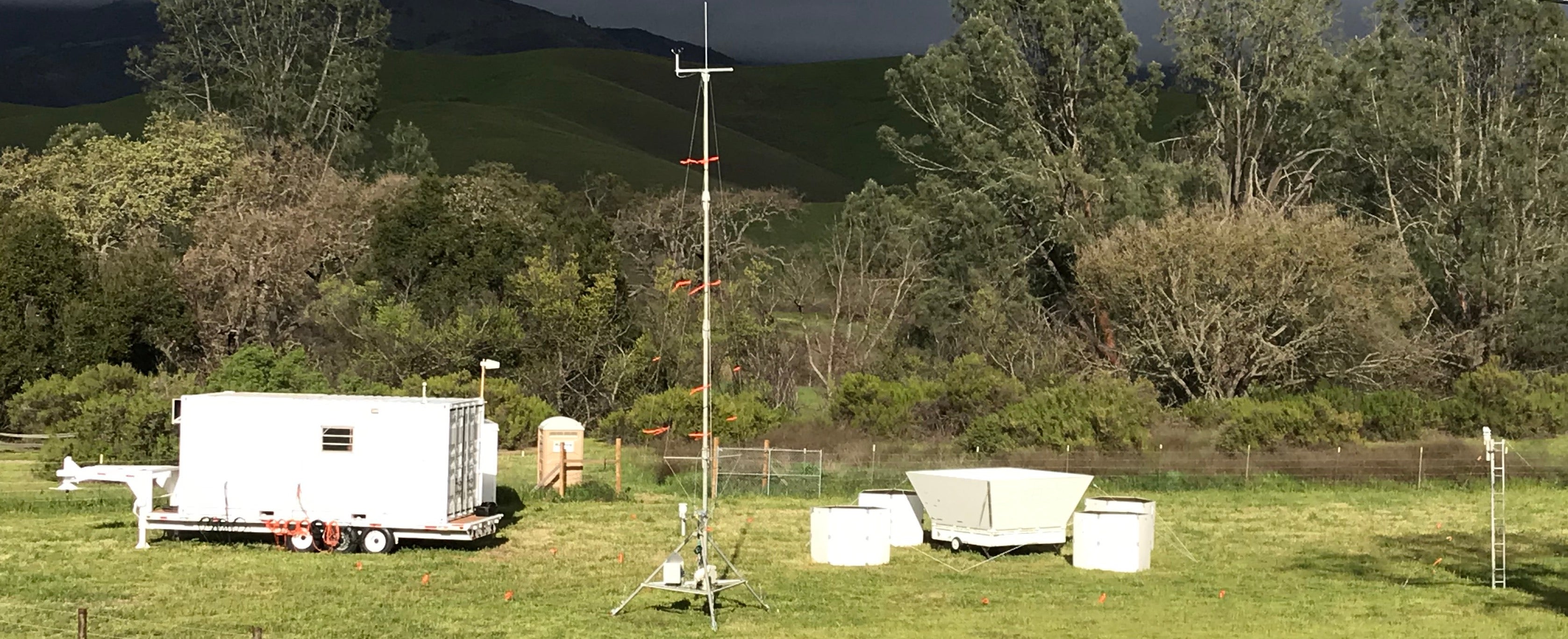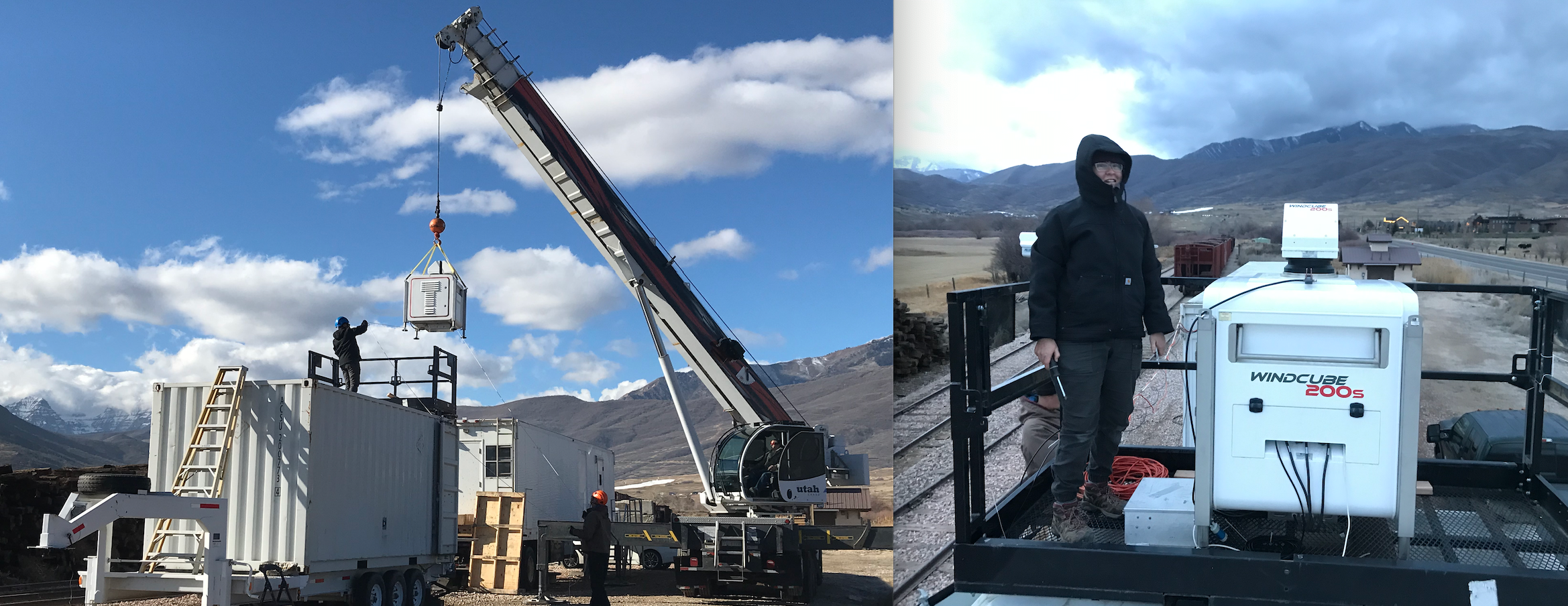ISS Base Trailer
The ISS sites are housed in a standard 20-foot sea container modified to serve as an equipment shelter and laboratory for project scientists and engineers. The modified sea container houses the Data Manager workstation, the profiler/RASS computer, the balloon borne sounding system computer, as well as storage for expendables, disks, and other equipment. The wind profiler and RASS speakers are typically placed on the ground outside of the container. The surface meteorological instrumentation and datalogger are outside away from the container.
Data Flow
The ISS (Integrated Sounding System) subsystems are integrated physically and digitally. The Data Manager, a linux work station, is the center of the ISS computer network and serves to collect, display, and archive data from each of the subsystems. The workstation continuously gathers data files from the radiosonde sounding system, the radar wind profiler/RASS sounding system, and other auxiliary systems such as a wind lidars and a ceilometer via a LAN. Data from the surface observing station is also routed via LAN into the Data Manager. The Data Manager can also format data and control data flow for transmission to sites well removed from the ISS site. As data arrive at the workstation, they can be reformatted, archived to DVD and external USB disk, and transmitted back to EOL for display on the web.
Connectivity
An ISS site typically uses either a DSL, satellite or cellular Internet connection, depending upon coverage and project needs. It can also use Wi-Fi if available, or a wired line at a host facility. In past projects, Internet access has used a modem and phone line, sometimes across wireless serial links.
Instrumentation:
Radar Wind Profilers
Radar wind profilers are usually deployed with the ISS. Two types of wind profiler are available:
- Traditional LAP3000 boundary layer wind profilers (operating at either 915 MHz or 1290 MHz), and
- EOL developed Modular Wind Profiler (operating at 449 MHz).
Both types of wind profiler operate in the UHF band and detect the backscattered signals from turbulence-induced refractive index variations. The profilers thus tracks the motion of the turbulent eddies which drift with the mean flow, providing a measurement of the mean wind velocity. In addition, the profilers detect precipitation and can provide some measure of precipitation fall velocities.
Radial wind velocities are obtained over a variable number of range gates (e.g. 25 to 40) using spectral moment and consensus averaging techniques. Consensus averages can be calculated over varying periods for two vertical modes: one for lower altitude sampling with a high vertical resolution and one for higher altitude sampling with reduced vertical resolution. The raw data are recorded on site in real time to allow for alternative post-processing.
Any shipboard ISS profiler installation requires special attention and adaptation. The microstrip profiler antenna needs to be mounted on a gyro stabilized platform. A three axis accelerometer may be required to measure oscillatory ship motions (backscattered signals are Doppler shifted by the motion of the ship) and a GPS receiver is used to determine the speed and heading of the ship. Details of shipboard testing of this system can be found in Carter, et al. (1992).
RASS
The radio acoustic sounding system (RASS) utilizes the vertical beam of the profiler to track a broad band acoustic frequency wave front produced by four speakers. (The radar actually tracks refractive index perturbations induced by the acoustic wave traveling at the local speed of sound.) The broad band frequency is used to assure that the Bragg criterion is met. A vertical virtual temperature profile is obtained from the tracking of this wave front (acoustic shell) from the relationship between air density and the propagation velocity (speed of sound) of that wave front.
Vertical virtual temperature profiles with 100 m resolution can be obtained periodically by the tracking of the generated acoustic signals. A correction can be applied in the real time processing to remove the vertical wind motion from the measured speed of the acoustic shell. Note that the RASS temperature profiles obtained in real time will be drastically affected by hydrometeors. The return from the hydrometeors will invalidate the measurement of vertical wind and the resultant correction will give erroneous profiles. In some cases where there are hydrometeors present, it may be possible to obtain a reliable shell propagation speed in post-processing by using rainfall rate measurements to estimate and remove the hydrometeor fall speeds which would otherwise contaminate the vertical wind measurement.
Radiosonde System
The ISS usually include a balloon borne radiosonde sounding system. The sounding system typically deploys the Vaisala RS-41 radiosonde which uses GPS satellite navigation signals for wind finding, but an iMet system is also available. Launching configurations can vary depending on the installation. The soundings are usually manually released, sometimes using a shelter or a balloon bag for inflation. The ISS usually submits automated TEMP or BUFR messages to the WMO GTS generated by ASPEN software.
Surface Observing System
The enhanced surface observing station consists of an instrumented tower. A 3 m or 10 m tower is instrumented with wind velocity sensors as well as pressure, temperature, and humidity sensors. A solar radiometer and precipitation sensor are also often deployed. Data are ingested using an EOL developed DSM (Data Sampling Module) Raspberry-PI based data logger which sends data to the Data Manager computer in the ISS trailer. Shipboard surface observing station installations require some type of shipboard navigation to correct for ship velocity in the wind velocity measurement.
The ISS surface meteorological instrument installation includes several sensors mounted on two separate towers as well as a rain gauge mounted independently.
- An anemometer is mounted on the top of a 10 m tower.
- Temperature and humidity sensors are mounted on the end of a one-meter boom attached to the 10 m tower at 2 m above the surface. The temperature and humidity sensors are aspirated and protected with a radiation shield.
- The pressure sensor is housed in the box containing the Campbell CR 10x datalogger. That box is mounted on the 10 m tower at 1 m above the surface and a "pressure port" is connected and mounted at 2 m. The "pressure port" reduces noise in the pressure sensor do to the venturi effect of from the wind.
- The radiation sensors are mounted on a 1 m boom on the top of a separate 1 m tower. The standard ISS radiation sensors include a Hukseflux NR01 4-component radiation. In situations which require more complete radiation measurements, additional sensors can be added, such as an up-looking Eppley PSP solar radiation sensor, Eppley PIR sensor and a net radiation sensor.
The output from all the sensors is directed to the Campbell datalogger for processing. The Campbell datalogger, which is independently programmable, typically generates 1-minute average data which are sent via RS-232 to the ISS Data Manager workstation. The data input to the Campbell datalogger are five-second sample data.
Vaisala Windcube 200S Scanning Lidar
The Leosphere/Vaisala Windcube 200S scanning lidar is a commercial instrument designed to measure wind and aerosol backscatter at distances up to 10 km across a variety of scanning geometries. The scanning strategies and measurement parameters are customizable to perform a wide range of research applications.



